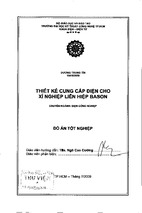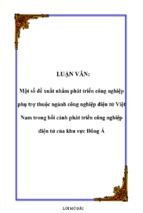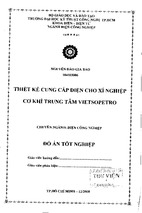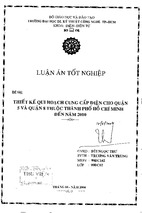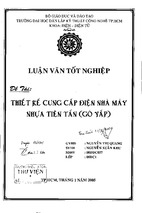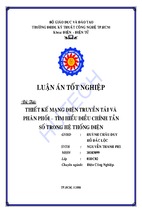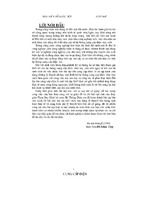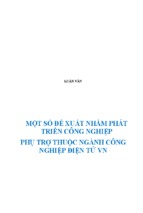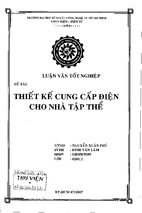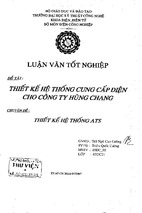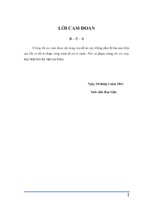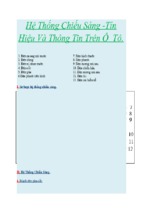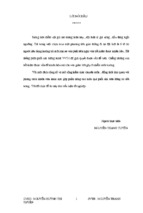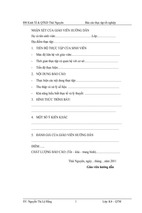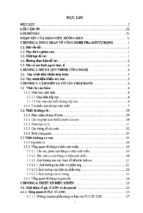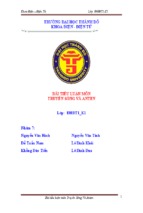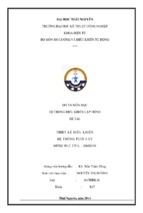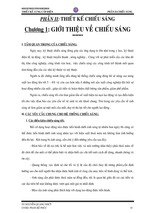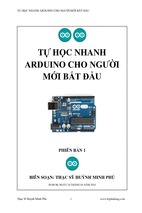BÁO CÁO MÁY ĐIỆN ĐẶC BIỆT-NHÓM 11
SHORT QUESTIONS AND ANSWER
CÂU HỎI VÀ TRẢ LỜI NGẮN
UNIT-I - SYNCHRONOUS RELUCTANCE MOTOR
BÀI – I – ĐỘNG CƠ ĐỒNG BỘ TỪ TRỞ
1. What is synchronous reluctance motor?
Động cơ đồng bộ từ trở là gì ?
A reluctance motor is a type of synchronous electric motor which
induces non-permanent magnetic poles on the ferromagnetic rotor.
Torque is generated through the phenomenon of magnetic reluctance.
* Động cơ từ trở là một loại động cơ điện đồng bộ mà cự từ của nó
không phải là nam châm vĩnh cửu. Moment được sinh ra thông qua hiện
tượng cảm ứng từ.
The stator consists of multiple salient (ie. projecting) electromagnet
poles, similar to a wound field brushed DC motor. The rotor consists of
soft magnetic material, such as laminated silicon steel, which has
multiple projections acting as salient magnetic poles through magnetic
reluctance.
* Stator gồm nhiều cực từ nhô ra ngoài (cực lồi), tương tự như động
cơ một chiều dây quấn kích từ có chổi than. Rotor được cấu tạo từ
những lá thép từ xếp lại thành nhiều lớp, những phần nhô ra là những
cực từ lồi hoạt động dựa trên hiện tượng cảm ứng từ.
The number of rotor poles is typically less than the number of
simultaneously stator poles, which minimizes torque ripple and prevents
the poles from all aligning -- a position which can not generate torque.
* Số cực của rotor thường it hơn stator, mục đích là để giảm thiểu sự
nhấp nhô của moment và để ngăn không cho các cực nằm thẳng
hàng cùng một lúc – một vị trí không thể tạo ra moment xoắn.
2. Define the characteristics of synchronous reluctance motor.
Những đặc điểm của động cơ đồng bộ từ trở.
The synchronous reluctance motor is not self starting without the
squirrel cage. During run up it behaves as an induction motor but as it
approaches synchronous speed, the reluctance torque takes over and the
motor locks into synchronous speed.
Động cơ đồng bộ từ trở không tự khởi động (mà không có lồng sóc).
Trong quá trình tăng tốc, nó hoạt động như một động cơ cảm ứng nhưng
khi đến gần tốc độ đồng bộ, moment tăng nhanh và động cơ đạt đến tốc
độ đồng bộ.
3. Write the applications of syrm.
Các ứng dụng của động cơ từ trở đồng bộ
Used where regulated speed control is required in applications suc as
metering pumps and industrial process equipment.
Ứng dụng trong điều khiển tốc độ theo yêu cầu như là máy bơm định
lượng và trong các thiết bị xử lý công nghiệp.
4. What are the classification of syrm
Phân loại động cơ từ trở đồng bộ
Axially laminated
Radially laminated
Trục dọc và trục ngang
5. What are the primary design consideration of syrm?
Yếu tố cơ bản trong chế tạo động cơ đồng bộ từ trở ?
High o/p power capability
Ability of the rotor to withstand high speed.
High reliability
Low cost
High efficiency
* Công suất tác dụng cao
* Khả năng làm việc ở tốc độ cao của rotor
* Độ tin cậy cao
* Giá thành thấp
* Hiệu suất cao
6. Define power factor of syrm
Xác định hệ số công suất của động cơ đồng bộ từ trở
PF max=(Ld/Lq-1)/(Ld/Lq+1)
Higher Ld/Lq ratos yield higher power factors,which corresponds to
reduced I^2R losses and reduce volt ampere ratings of the inverter
driving the machine.
PFmax=(Ld/Ld-1)/(Ld/Ld+1)
*Hệ số Ld/Lq càng lớn thì hệ số công suất càng cao, tương ứng với giảm
tổn hao I^2R và giảm dòng, áp của bộ điều khiển biến tần.
7. What are the applications of the torque – speed characteristics of
syrm?
Ứng dụng của moment xoắn – đặc tính tốc độ của động cơ đồng bộ
từ trở
Comparable power density but better efficiency than induction
motor
Slightly lower power factor
Sensorless control is much easier due to motor saliency.
*Cùng một công suất thì hiệu suất của động cơ đồng bộ từ trở cao
hơn động cơ cảm ứng
* Hệ số công suất hơi thấp
* Điều chỉnh cảm biến dễ hơn rất nhiều so với động cơ thông thường
8. What are advantages of syrm over pm machine?
Ưu điểm của động cơ đồng bộ từ trở so với loại máy điện khác
More reliable than PM machine
There need not be any excitation field as torque is zero,thus
eleiminating electro magnetic spinning losses.
* Độ tin cậy cao hơn
* Không cần từ trường kích thích khi khởi động, loại trừ tổn hao từ
trường quay
9. What are applications of syrm?
Ứng dụng của động cơ đồng bộ từ trở
Synthetic fiber manufacturing equipment
Wrapping and folding machine
Auxiliary time mechanism
Synchronized conveyors
Metering pumps
* Chế tạo sợi cáp quang tổng hợp
* Máy gấp và đóng gói
* Cơ cấu thời gian phụ
* Băng tải đồng bộ
* Máy bơm định lượng
10. What is vernier motor?
Động cơ điều khiển (có thước đo)
It is an unexcited reluctance type sync.motor.the peculiar feature of this
motor is that a small displacement of the rotor produces a large
displacement of the axis of maximum and minimum permeance.
Là loại động cơ đồng bộ không có từ trở kích thích. Tính năng đặc biệt
của động cơ này là sự thay đổi nhỏ của rotor tạo ra một sự thay đổi lớn
độ từ dẫn tối đa và tối thiểu.
11. What are the advantages of syrm ?
Ưu điểm của động cơ đồng bộ từ trở
a. Freedom from pm
b. Ability to maintain full load torque at zero speed
c. A wide speed range at constant power.
a. Làm việc độc lập
b. Khả năng duy trì moment đầy tải khi động cơ đứng yên
c. Vùng điều chỉnh tốc độ rộng khi công suất không đổi
12. What are the classifications of SYRM?
Phân loại động cơ đồng bộ từ trở
Rotor configuration
i)cage rotor for line start ii)cageless-rotors for variable speed
Stator windings
Stator current controlled mode
* Theo kiểu rotor
i) Rotor lồng sóc tốc độ không đổi
ii) Rotor không lồng sóc tốc độ thay đổi
13. What are the rotor configurations of SYRM?
Cấu tạo rotor của động cơ đồng bộ từ trở
Rotor configuration
i)cage rotor for line start
ii)cageless-rotors for variable speed
Cấu tạo rotor
i)Rotor lồng sóc khởi động không đổi
ii)Rotor không lồng sóc tốc độ thay đổi
14. What is meant by Slow-speed synchronous timing motors
Động cơ đồng bộ định thời tốc độ thấp
Representative are low-torque synchronous motors with a multi-pole
hollow cylindrical magnet (internal poles) surrounding the stator
structure. An aluminum cup supports the magnet. The stator has one
coil, coaxial with the shaft. At each end of the coil are a pair of circular
plates with rectangular teeth on their edges, formed so they are parallel
with the shaft. They are the stator poles. One of the pair of discs
distributes the coil's flux directly, while the other receives flux that has
passed through a common shading coil. The poles are rather narrow, and
between the poles leading from one end of the coil are an identical set
leading from the other end. In all, this creates a repeating sequence of
four poles, unshaded alternating with shaded, that creates a
circumferential traveling field to which the rotor's magnetic poles
rapidly synchronize. Some stepping motors have a similar structure.
Tiêu biểu là động cơ đồng bộ moment thấp với nhiều cực hình trụ
rỗng xung quanh stator. Một lá nhôm tạo từ trường, stator có một
cuộn dây quấn, đồng trục với trục động cơ, cuối mỗi cuộn dây có
2 đầu ra nối với những vành góp hình răng cưa, những vành góp
này được đặt song song với trục động cơ. Chúng là những cực
của stator. Mỗi cặp đĩa phân bố từ thông một cách trực tiếp, trong
khi cặp đĩa khác nhận từ thông gởi qua một cuộn dây cùng màu.
Các cực khá nhỏ, giữa những cực đặt lệch pha với đầu cuối của
cuộn dây được sắp xếp một cách đồng nhất với đầu cuối của
cuộn dây khác. Và sự sắp xếp này được lặp lại với những cực
khác (4 cực), xen kẻ với nhau, tạo nên từ trường khép kín để các
cực từ của rotor nhanh chóng đồng bộ. Một số động cơ bước có
cấu tạo tương tự.
15. What is meant by Watthour-meter motors?
Động cơ đo điện năng
These are essentially two-phase induction motors with permanent
magnets that retard rotor speed, so their speed is quite accurately
proportional to wattage of the power passing through the meter. The
rotor is an aluminum-alloy disc, and currents induced into it react with
the field from the stator. One phase of the stator is a coil with many
turns and a high inductance, which causes its magnetic field to lag
almost 90 degrees with respect to the applied (line/mains) voltage. The
other phase of the stator is a pair of coils with very few turns of heavygauge wire, hence quite-low inductance. These coils are in series with
the load.
Về cơ bản, đây là những động cơ cảm ứng 2 pha với nam châm vĩnh cữu
có thể điều chỉnh được tốc độ của rotor, vì vậy tộc độ của nó tỉ lệ khá
chính xác với công suất đươc hiển thị trên đồng hồ đo. Rotor được làm
từ một đĩa hợp kim nhôm, và dòng điện cảm ứng đi vào chống lại (tương
tác với) từ trường do stator sinh ra. Một pha của stator là một cuộn dây
được quấn nhiều vòng có cảm kháng cao, tạo ra từ trường chậm hơn
gần 90ᴼ so với điện áp đặt vào. Pha khác của stator gồm 2 cuộn dây ít
vòng cỡ lớn, vì thế nó có điện cảm khá thấp. Các cuộn dây còn lại được
mắc nối tiếp với tải.
16. How does the Watthour-meter motors look like?
Động cơ đo điện năng trông như thế nào ?
The core structure, seen face-on, is akin to a cartoon mouth with one
tooth above and two below. Surrounding the poles ("teeth") is the
common flux return path. The upper pole (high-inductance winding) is
centered, and the lower ones equidistant. Because the lower coils are
wound in opposition, the three poles cooperate to create a "sidewise"
traveling flux. The disc is between the upper and lower poles, but with
its shaft definitely in front of the field, so the tangential flux movement
makes it rotate.
Cấu tạo cốt lõi nhìn từ mặt trên thì hơi giống một cái miệng bằng tranh
vẽ với một cái răng ở phía trên và 2 cái ở dưới. Xung quanh các cực
(răng) là những dây dẫn bố trí trên cùng một khe. Cực ở trên (dây dẫn
điện kháng cao) nằm ở giữa và những cực ở nằm dưới thì cách đều
nhau. Vì những cuộn dây nằm phía dưới được quấn đối xứng nhau, sự
kết hợp giữa 3 cực tạo nên từ thông khép kín nằm ngang. Đĩa nằm ở
giữa các cực trên và cực dưới nhưng trục của nó nằm ngay trước vùng
từ trường, do đó sự dịch chuyển của từ thông theo phương tiếp tuyến
làm cho đĩa quay tròn.
17. Electronically commutated motors?
Động cơ chuyển mạch điện tử
Such motors have an external rotor with a cup-shaped housing and a
radially magnetized permanent magnet connected in the cup-shaped
housing. An interior stator is positioned in the cup-shaped housing. The
interior stator has a laminated core having grooves. Windings are
provided within the grooves. The windings have first end turns proximal
to a bottom of the cup-shaped housing and second end turns positioned
distal to the bottom. The first and second end turns electrically connect
the windings to one another. The permanent magnet has an end face rom
the bottom of the cup-shaped housing. At least one galvano-magnetic
rotor position sensor is arranged opposite the end face of the permanent
magnet so as to be located within a magnetic leakage of the permanent
magnet and within a magnetic leakage of the interior stator. The at least
one rotor position sensor is designed to control current within at least a
portion of the windings. A magnetic leakage flux concentrator is
arranged at the interior stator at the second end turns at a side of the
second end turns facing away from the laminated core and positioned at
least within an angular area of the interior stator in which the at least one
rotor position sensor is located
Là những động cơ có rotor ở ngoài có hình dạng như một cái chén uống
nước và một nam châm vĩnh cữu gắn với khối hình cái chén đó. Có một
stator đặt bên trong. Stator bên trong có lõi gồm nhiều lát mỏng ghép lại
có nhiều rảnh. Các cuộn dây được đặt trong những rãnh đó. Những
cuộn dây có đầu ra thứ nhất ở gần với phần đáy của khối hình cái chén,
và đầu ra thứ hai ở vị trí ngoài rìa của đáy. Đầu ra thứ nhất và thứ hai
mang điện nối các cuộn dây lại với nhau. Phần sau của nam châm vĩnh
cữu gắn với đáy của khối hình trụ. Có ít nhất 1 cảm biến xác định vị trí
của rotor đặt ở mặt cuối của nam châm vĩnh cữu để xác định vị trí của
khe hở từ trường của nam châm vĩnh cữu và bên trong stator. Cảm biến
này được gắn vào để điểu chỉnh dòng điện trong ít nhất một phần của
các cuộn dây. Khối tập trung khe hở từ thông đặt bên trong stator ở đầu
ra thứ hai.
18. what is meant by repulsion motor?
Động cơ đẩy là gì ?
Repulsion motors are wound-rotor single-phase AC motors that are
similar to universal motors. In a repulsion motor, the armature brushes
are shorted together rather than connected in series with the field. By
transformer action ,the stator induces currents in the rotor, which create
torque by repulsion instead of attraction as in other motors. Several
types of repulsion motors have been manufactured, but the repulsionstart induction-run (RS-IR) motor has been used most frequently. The
RS-IR motor has a centrifugal switch that shorts all segments of the
commutator so that the motor operates as an induction motor once it has
been accelerated to full speed. Some of these motors also lift the brushes
out of contact with the commutator once the commutator is shorted. RSIR motors have been used to provide high starting torque per ampere
under conditions of cold operating temperatures and poor source voltage
regulation
Động cơ đẩy là những động cơ xoay chiều 1 pha rotor dây quấn tương
tự những động cơ thông thường khác. Những chỗi than phần ứng ngắn
hơn được mắc nối tiếp. Khi hoạt động, dòng điện cảm ứng stator trong
roto tạo ra moment bởi từ trở thay vì lực hút như những động cơ khác.
Nhiều loại động cơ từ trở được sản xuất nhưng động cơ khởi động kiểu
cảm ứng – chạy kiểu từ trở (RS-IR) được sử dụng hầu như là thường
xuyên. Động cơ (RS-IR) có 1 công tắc ly tâm ngắn mạch tất cả các bộ
phận của công tắc chuyển mạch để sự vận hành động cơ như một loại
động cơ cảm ứng, được gia tốc đến tốc độ ổn định. Một vài động cơ
dạng này cũng có chổi than được đẩy ra tiếp xúc với bộ chuyển mạch (bị
ngắn mạch). Động cơ (RS-IR) được sử dụng để cung cấp moment khởi
động lớn trong điều kiện nhiệt độ hoạt động thấp và để điều chỉnh điện
áp nguồn không ổn định.
19. Define Slip.
Định nghĩa độ trượt.
If the rotor of a squirrel runs at high speed, the flux in the rotor at any
given place on the rotor would not change, and no current would be
created in the squirrel cage. For this reason, ordinary squirrel-cage
motors run at some tens of rpm slower than synchronous speed, even at
no load. Because the rotating field (or equivalent pulsating field)
actually or effectively rotates faster than the rotor, it could be said to slip
past the surface of the rotor. The difference between synchronous speed
and actual speed is called slip, and loading the motor increases the
amount of slip as the motor slows down slightly.
Nếu động cơ lồng sóc chạy ở tốc độ cao, từ thông trong rotor ở nơi xác
định bất kỳ trên rotor là không đổi, và không có dòng sinh ra trên lồng
sóc. Vì vậy, những động cơ rotor lồng sóc thông thường chạy khoảng vài
chục vòng/phút, thấp hơn tốc độ đồng bộ, ngay cả khi chạy không tải.
Bởi vì từ trường xoay (từ trường đập mạch tương đương) thực tế hay
trong đo đạc đều lớn hơn tốc độ rotor. Có thể nói nó trượt qua bề mặt
của rotor. Sự khác nhau giữa tốc độ đồng bộ và tốc độ thực tế gọi là độ
trượt, và độ lớn của độ trượt tăng khi tốc độ động cơ giảm nhẹ.
20. Write the formula for the speed of the AC motor.
Công thức tính tốc độ động cơ xoay chiều.
The speed of the AC motor is determined primarily by the frequency of
the AC supply and the number of poles in the stator winding, according
to the relation: Ns = 120F / p Where Ns = Synchronous speed, in
revolutions per minute F = AC power frequency p = Number of poles
per phase winding
Tốc độ của động cơ xoay chiều được xác định chủ yếu bằng tần số của
nguồn xoay chiều và số cực của dây quấn stator, theo công thức : Ns =
120F/p, với Ns = tốc độ đồng bộ (vòng/phút), F = tần số nguồn xoay
chiều, p = số cực trên mỗi pha dây quấn.
UNIT – II - STEPPER MOTORS
BÀI – II - Động
Cơ Bước
1. What is stepper motor?
A stepper motor is a digital actuator whose input is in the form of
programmed
energization of the stator windings and whose output is in the form of
discrete angular
rotation.
1. Động cơ bước là gì?
Động cơ bước là một thiết bị truyền động kỹ thuật số mà đầu vào là thuộc dạng lập
trình, cấp điện cho các cuộn dây stator và đầu ra có dạng quay từng góc.
2. Define step angle.
Step angle is definrd as the angle through which the motor rotates for each
command
pulse.it is denoted as β.
β=(Ns-Nr/Ns.Nr)360 (or)360/(mNr)
2. Xác định góc bước
Góc bước được định nghĩa là góc chuyển qua mà động cơ quay trong mỗi xung.Nó
được ký hiệu là β.
β = (Ns-Nr/Ns.Nr) 360 (hoặc) 360 / (MNR)
3. Define slewing
The stepper motor operates at very high speed is called slew angle.i,e (25000
steps per
sec).
3. Xác định góc xoay
Động cơ bước vận hành ở tốc độ rất cao được gọi là góc xoay.i, e(25.000 bước /
giây).
4. Define resolution
It is defined as the no.of steps needed to complete one revolution of the shaft.
Resolution = no . of steps /revolution
4. Xác định độ phân giải
Được định nghĩa là số bước cần thiết để hoàn thành một vòng quay của trục.
Độ phân giải = số bước / vòng
5. Mention some applications of stepper motor
I.floppy disc drives
ii. qurtz watch
iii. camera shutter operation
iv. dot matrix and line printers
v. small tool application
vi. robotics
5. Một số ứng dụng của động cơ bước
i.
ii.
iii.
iv.
v.
Trình điều khiển ổ đĩa mềm
Máy chiếu phim
Ma trận điểm và máy in
CNC
Robot
6. What are the advantages and disadvantages of stepper motor?
Adv:
1. it can be driven in open loop without feedback
2. it is mechanically simple
3. it requires little or no maintenance.
Disadv:
1.low efficiency
2.fixed step angle
3.limited power output
6. Những ưu điểm và nhược điểm của động cơ bước là gì?
Ưu điểm:
Có thể điều khiển ở chế độ vòng hở không cần thông tin phản hồi
Cấu tạo đơn giản
Ít hoặc không cần bảo trì
Nhược điểm:
Hiệu suất thấp
Góc bước cố định (Không thay đổi được góc bước)
Nguồn ngõ ra hạn chế
7. Define holding torque.
Holding torque is the maximum load torque which the energized stepper
motor can
withstand without slipping from equilibrium position
7. Xác định mô-men hãm.
Mô-men hãm là mô-men tải tối đa mà động cơ bước có thể chịu được mà không bị
trượt từ vị trí cân bằng
8. Define detent torque
Detent torque is the maximum torque which the unenergised stepper motor
can
withstand without slipping.it is also known as cogging torque.
8. Xác định mô-men xoắn chốt hãm
Mô-men chốt hãm là mô-men tối đa mà động cơ bước có thể chịu được mà không
bị trượt còn được gọi là mô-men xoắn chốt(cogging).
9. What is meant by full step operation?
Full step operation or single phase on mode is the one in which at a time only
one phase winding is energized, due to which one stator winding is energized
and causes the rotor to rotate some angle.
9. Vận hành bước đủ là gì
Vận hành bước đủ hay chế độ1 pha là tại một thời điểm chỉ có một cuộn dây pha
là có điện, do đó một cuộn dây stator có điện và làm cho rotor xoay một số góc.
10. What is meant by two phase mode of operation?
Two phase on mode is the one in which two phase windings are energized at a
time, due to which two stator windings are energized and causes the rotor to
rotate through some angle.
10.Vận hành ở chế độ 2 pha là gì?
Vận hành bước đủ ở chế độ 2 pha là tại một thời điểm có 2 cuộn dây pha có điện,
do đó 2 cuộn dây stator có điện và làm cho rotor xoay một số góc.
11. Define pull in torque.
It is the maximum torque the stepper motor can develop in start – stop mode
at a given stepping rate Fs (step/sec) without losing synchronism.
11. Xác định lực kéo của mô-men
Động cơ bước có mô-men xoắn tối đa có thể phát triển trong chế độ khởi độngdừng ở tốc độ FS(bước / giây) mà không làm mất đồng bộ.
12. Define pull out torque.
It is the maximum torque the stepper motor can develop in slewing mode at a
given
stepping rate Fs (step/sec) without losing synchronism.
12. Xác định Mô-men đẩy ngoài
Là mô-men xoắn tối đa động cơ bước có thể đạt ở chế độ xoay ở tốc độ (bước /
giây) mà không làm mất đồng bộ.
13. What is synchronism in stepper motor?
It is the one to one correspondence between the number the number of pulses
applied to the stepper motor and the number of steps through which the
motor has actually moved.
13. Đồng bộ trong động cơ bước là gì?
Nó là 1-1 tương ứng giữa số xung cấp cho động cơ bước và số bước động cơ đã
dịch chuyển được.
14. Define mid frequency resonance in stepper motor.
The phenomenon at which the motor torque drops to a low value at certain
input pulse frequencies.
14. Xác định tần số cộng hưởng trong động cơ bước.
Hiện tượng mà tại đó mô-men xoắn động cơ giảm xuống một giá trị thấp tại tần số
xung đầu vào nhất định
15. Define static stiffness.
It is a measure of ability of the actuator to resist disturbing torques and forces
and thereby to maintain position.it is defined as
S=torque / rad
15. Xác định độ cứng tĩnh.
Là thước đo khả năng của thiết bị truyền động để chống lại mômen cản và các
nguồn để duy trì vị trí của nó, được xác định bằng
S = mô-men / rad
16. Give the types of driver circuits.
Resistance or L/R drive
Dual voltage or bilevel drive
Chopper drive
16. Các loại mạch điều khiển.
Điện trở hoặc L / R
Nguồn đôi hoặc điều khiển 2 mức
Chopper drive
17. What is multi stack VR motor
Multi stack VR motor is the one in which the stepper motor has three
separate magnetically nisolated sections or stacks.here the rotor and stator
teeths are equal.
17. Động cơ biến từ trở (VR variable reluction) đa ngăn là gì
Động cơ biến từ trở (VR variable reluction) đa mấu là một trong đó động cơ bước
có ba phần từ tính cách ly riêng biệt hoặc từng ngăn, các răng rotor và stator bằng
nhau.
18. What is meant by micro stepping in stepper motor.
The methods of modulating currents through stator windings so as to obtain
rotation of stator magnetic field through a small angle to obtain micro
stepping action is known as micro stepping.
18. Vi bước trong động cơ bước có nghĩa là gì?
Các phương pháp điều chỉnh dòng qua cuộn dây stato để thay đổi từ trường stator
thông qua một góc nhỏ có được 1 bước nhỏ (rotor) được gọi là vi bước .
19. What are the advantages of micro stepping?
Improvement in resolution.
Dc motor like performance
Elimination of mid frequency resonance
Rapid motion at micro stepping rate.
19. Những ưu điểm vi bước là gì?
Cải thiện độ phân giải.
Tăng hiệu suất
Loại bỏ cộng hưởng giữa các tần số
Chuyển động nhanh với tốc độ vi bước .
20. Define bandwidth in stepper motor.
It is a measure of the frequencies upto which the actuator or servo motor
system can respond.
20. Xác định băng thông động cơ bước.
Đây là phương pháp đo các tần số tối đa mà hệ thống các thiết bị truyền động hay
động cơ servo có thể đáp ứng.
PART-B
1. Explain the construction and various modes of excitation of VR stepper
motor. (16)
2. Explain the construction and various modes of excitation of PM stepper
motor. (16)
3. Explain the construction and working principle of Hybrid Stepper motor.
(16)
4. State and explain the static and dynamic characteristics of a stepper
motor. (16)
5. Explain in detail about different types of power drive circuits for stepper
motor. (16)
6. Explain the mechanism of torque production in VR stepper motor. (16)
7. Draw any two drive circuits for stepper motor. (16)
PHẦN-B
1. Giải thích cấu tạo và các chế độ kích từ của động cơ VR bước. (16)
2. Giải thích cấu tạo và các chế độ kích từ khác nhau của động cơ PM bước. (16)
3. Giải thích cấu trúc và nguyên tắc làm việc của Động cơ bước hỗn hợp.
(16)
4. Nêu và giải thích các đặc tính tĩnh và động của động cơ một bước. (16)
5. Giải thích chi tiết về các loại mạch điều khiển của động cơ bước. (16)
6. Giải thích cơ chế sản sinh mô-men xoắn trong động cơ bước VR. (16)
7. vẽ bất kỳ hai mạch đk cho động cơ bước. (16)
UNIT III: SWITCHED RELUCTANCE MOTOR
PHầN III:ĐỘNG CƠ TỪ TRỞ CÓ ĐÓNG NGẮT
1. What is srm?
It is a doubly salient , single excited motor.this means that it has salient poles
on both rotor and the stator.but only one member carries winding.the rotor
has no windings,magnets or case windings.
1. SRM là gì?
Nó là một bộ lồi, động cơ kích từ đơn,có nghĩa là nó có nhiều điểm cực lồi trên cả
rotor và stator nhưng chỉ có trên cực stator mớí có dây quấn còn rotor không có
dây quấn, nam châm hay cuộn dây
2. What are the advantages od SRM?
Construction is very simple
Rotor carries no winding
No brushes and requires less maintenance
2. Những ưu điểm của SRM là gì?
Cấu tạo rất đơn giản
Rotor không có dây quấn
Không có chổi than và ít yêu cầu bảo dưỡng
3. What are the disadvantages of SRM?
It requires a position sensor
Stator phase winding shold be capable of carrying magnetizing currents
3. Những nhược điểm của SRM là gì?
Đòi hỏi phải có một cảm biến vị trí
Cuộn dây pha stator phải có khả năng mang dòng từ hóa
4. Why rotor position sensor is essential for the operation of switched
reluctance
motor?
It is necessary to use a rotor position sensor for commutation and speed
feedback. The turning on and off operation of the various devices of power
semiconductor switching circuit are influenced by signals obtained from rotor
position sensor.
4. Tại sao cảm biến vị trí là cần thiết cho hoạt động SRM motor
- Xem thêm -

